|
|
by Michael A. Morrow |
|
Yeah. I saw what you did there. You clicked on the Quadratic Formula method for finding the Root Mean Chord, scrolled down, took one look at the quadratic formula, and your brain screamed "Aaaiiiiiiiieeeeee!!!! It's 'THE MATH'!!!!", and back-clicked so fast that there was a pop from the air rushing into the vacuum you created when you disappeared. Don't try to tell me you didn't. Sooo. This is the "easy" way to find the root mean chord. All you need is the plan form of the wing section, a good ruler (preferably a machinists ruler that measures hundredths of an inch), a sharp pencil, and a calculator. And you don't really even need a calculator if you can draw a straight line, measure the length of that line, and multiply that length by 0.25 (for a 25% chord balance point). So here's how to do it. You start with a full-size drawing of the wing planform like this (ignore rounded wingtips - square them off): 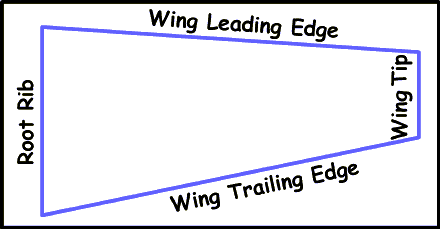    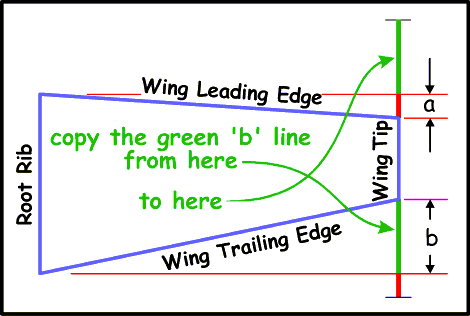  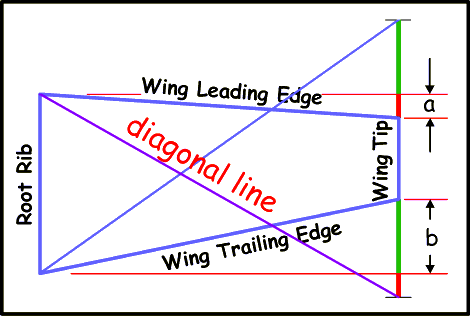 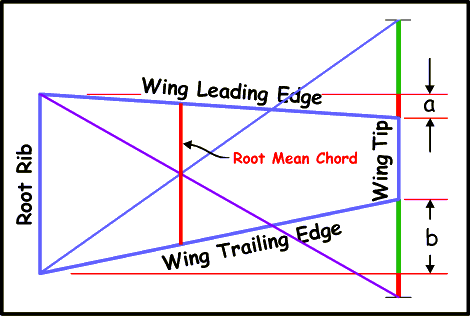 Measure the length of the Root Mean Chord, and multiply that length by 0.25. 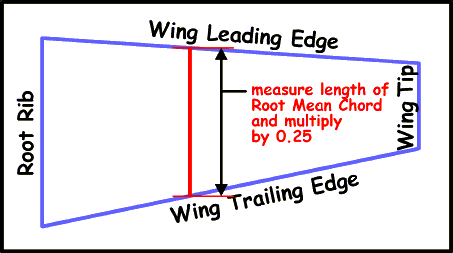 Mark a point 25% of the Root Mean Chord from the leading edge of the wing:  At the point you just marked, draw a horizontal line across to the Root Rib like this:  Where the line intersects the root rib is the 25% Center of Gravity (CG) as shown here: 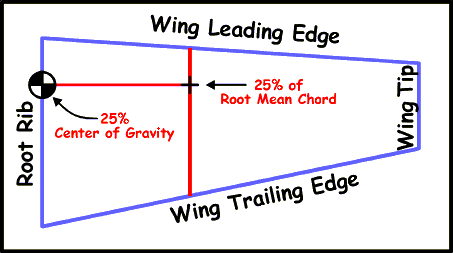 The CG target ----> Congratulations! You have just found the Center of Gravity using the graphical analysis method! That wasn't so hard was it?  |
| Back to the Flight Trimming a No-Cal page |

|
|
Michael A. Morrow's AERO ACES - Doing Business since 1995 ! AERO ACES is a TRADEMARK of Michael A. Morrow. © All Images, drawings, plans, articles, and kits, are Registered & Copyrighted by Michael A. Morrow |